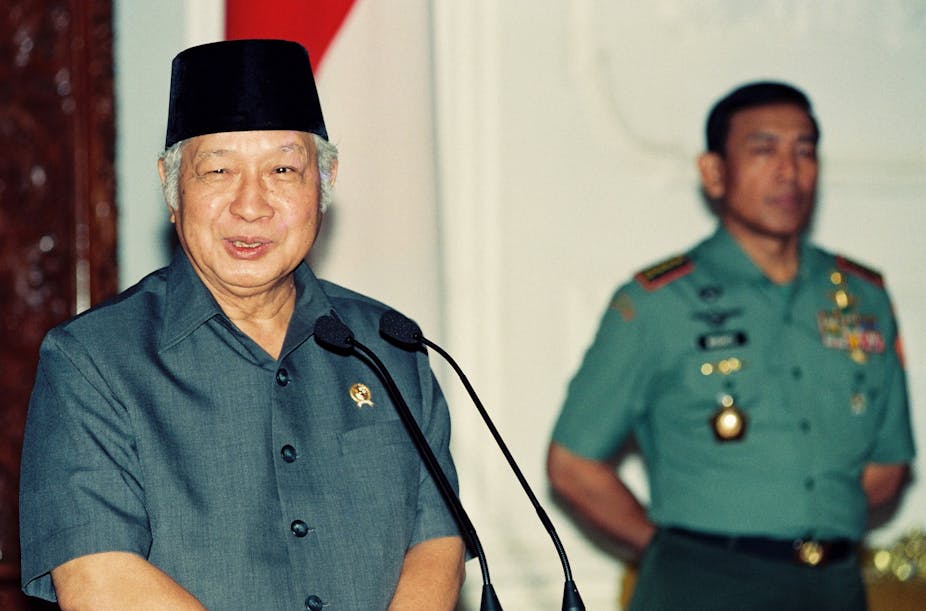The study of Indonesia’s modern history owes much to the prominent scholar Ben Anderson, who died last Thursday while travelling in East Java.
His works on Indonesia challenged Suharto’s military regime, which finally ended in 1998 after a 32-year rule.
Anderson especially challenged the ruling regime’s narrative of what happened in 1965. On October 1, in a watershed moment for Indonesia, six army generals were kidnapped and killed by junior officers from Sukarno’s presidential guards calling themselves The September 30th Movement or Gerakan 30 September (G30S).
Accusing the Indonesian Communist Party (PKI) of masterminding the kidnapping, General Suharto took over the military command, led the brutal destruction of the PKI and eventually replaced Sukarno as president.
Suharto’s rise to power changed Indonesia from a fiercely nonaligned country into a friendly Western ally and help shift the political world order toward the US.
The Cornell Paper

In 1971, Anderson co-wrote his analysis of the 30th September Movement titled A Preliminary Analysis of the October 1, 1965, Coup in Indonesia. A year later the Indonesian government considered him persona non grata. He was banned from entering Indonesia until Habibie replaced Suharto as president and allowed Anderson to enter the country again in 1999.
The report, which became known as the “Cornell Paper”, had actually been circulating among Anderson’s colleagues since the beginning of 1966. The Washington Post reported the research on March 5, 1966.
The Cornell Paper argued that what happened on October 1, 1965, was a result of an internal rift in the army. In particular, it was triggered by conflicts between officers from the Diponegoro Army Command in Central Java.
The report challenged the dominant narrative of Suharto’s military regime. Not long after the generals’ deaths, the military commissioned a team of historians to produce a book titled 40 Days of “G-30-S” Failure. Even though the regime had yet to equate the G30S with the PKI, the book mentioned the organisation as the mastermind.
The circulation of Anderson’s Cornell Paper in 1966 agitated the Indonesian military. Guy Pauker from the American think-tank Rand Corporation, who was close to the CIA, invited Major General Soewarto to the US and told the Commander of Seskoad (the Indonesian Army Command and General Staff College) about the existence of the research.
Soewarto sent military historians Nugroho Notosusanto and Ismail Saleh to the US. With Pauker, they wrote a competing report, The Coup Attempt of September Movement in Indonesia, which was published in 1968.
Damning findings
In the 1967, researcher George Kahin visited Indonesia and requested access to documents on the 30th September Movement to the Indonesian intelligence and attorney-general. Only in 1976 did Jakarta deliver several kilograms of material relating to the special military tribunal of 1965 to the Kroch Library at Cornell University.
When Anderson was studying the trial documents of Heru Atmojo, a lieutenant colonel whose name was mentioned as deputy commander of the 30th September Movement, he found in the appendix the autopsy reports of the officers who were killed on October 1, 1965.
Anderson then wrote How Did The Generals Die in the journal Indonesia in April 1987. The autopsy confirmed that the eyes of the dead officers were not gouged and the genitals were not mutilated as reported by the regime. This article shook the credibility of Suharto’s regime.
Looking for research gaps
When Anderson returned to Indonesia in 1999 he compared his return to that of Tan Malaka, a leftist revolutionary leader who was exiled from the Dutch Indies in the 1920s and returned to Java in 1942.
Anderson continued to show his ingenuity in looking for gaps that other researchers hadn’t seen in the 1965 case. While in the Cornell Paper he wrote about the role of military elites, in 1999 he gave his attention to the soldiers and their worlds.
He carried out long interviews with Mayor Sergeant Bungkus, who was involved in the kidnapping of the generals.
Even though Bungkus was sentenced to death, he was not executed and was released after Suharto stepped down. Bungkus was from Madura, an island off East Java. Anderson traced the role and networks of people of Madura who became field officers in the 30th September Movement.
Bungkus’ superior was Lieutenant Dul Arif, also a Madurese, who disappeared after the generals’ deaths. Dul Arif and another Madurese and Bungkus’ senior, Djahurup, were members of the presidential guards Tjakrabirawa and believed to be close to Ali Murtopo, one of Suharto’s loyal generals.
This gives historians some homework to do. How significant is Murtopo’s role in 1965? Did Dul Arif and Djahurup become victims of forced disappearances?
The three writings by Anderson – the Cornell Paper, How Did the Generals Die and the Bungkus interviews – challenged the ruling regime. Anderson was banned from entering Indonesia for 27 years under Suharto. Because of this he did research outside Indonesia, such as in the Philippines and Thailand, and wrote books about those countries.
The ban from Indonesia may be a a blessing in disguise for Ben Anderson. He became more than an Indonesianist. Nevertheless, his first and last love was Indonesia and, at 79, he took his last breath in this country.

